Gary Weinert - The Brake That Changed the Game - PODCAST TRANSCRIPT
August 1, 2025 at 9:00 a.m.Editor's note: The following is the transcript of a live interview with Van Mark’s Director of Sales & Marketing, Gary Weinert. You can read the interview below or listen to the podcast.
Megan Ellsworth: This is very casual, Okay, I'm gonna wait 10 seconds to give it a little buffer.
Gary Weinert: Got it.
Megan Ellsworth: Hello everyone, my name is Megan Ellsworth here at RoofersCoffeeshop.com and you are listening to a roofing road trip. I'm so excited. I have my friend Gary Weinert here from Vanmarck and we're talking about the break that changed the game today. And I'm just really excited. I love chatting with you, Gary Weinert and I love Vanmarck products. So let's dive right in and have you introduce yourself. Hello.
Gary Weinert: All right. My name is Gary Weinert, Gary Weinert Weiner. I'm with Vanmarck. I'm the quote unquote director of sales and marketing here. And I've been with the company longer than I want to admit, but it's I think it's going on 34 years. So been hanging around here a while.
Megan Ellsworth: wow. Congrats. That's awesome. They can't get rid of you. I love it. love it. I would love it if you could kind of talk us through the story of Van Mark's founding and how it all began with just a need for better tools.
Gary Weinert: No, they haven't changed the locks, so I keep coming to work. How's that?
Gary Weinert: Yeah. And I have the wrong shirt on. Usually I should have 60 years. Last year was our 60th anniversary. actually, technically we're 61 now. Founded by a guy named Gene, who was a contractor. And back in the late 50s, early 60s, if a contractor needed metal bed for a drip edge or for a window installer siding, they had to go to a shop, get it bent, then take it out there and hope it fit.
Megan Ellsworth: love. Aww.
Gary Weinert: And Gene, he had told me the story once, one of his prototypes was two by fours and door hinges that they would use on the job site to do the little custom things. So with that, he basically engineered or developed a brake similar to what the big press brakes were, but it was out of aluminum. So it was very light, very portable and you could take it to the job sites. So that's kind of how it all got started. It's one of those.
Megan Ellsworth: Yeah.
Megan Ellsworth: Wow.
Megan Ellsworth: That's awesome.
Gary Weinert: It was a need and he could see the need and took it from there.
Megan Ellsworth: Yeah.
Megan Ellsworth: Yeah. I mean, that's always how the best innovations happen, right? Out of necessity. Love it. And so Vanmarck is family owned and made in Michigan still for over 60 years now. That's amazing. How has that shaped the company's culture, values and approach to all your tool development?
Gary Weinert: Yep.
Gary Weinert: Yeah, 60 years.
Gary Weinert: Yeah, boy, guess, I mean, being small has advantages, disadvantages. We don't have the money of the big guys, but we're, what is it? We're smaller, we're more agile. But the whole thing with it being family owned and, know, Gene had started the company, he had passed away, I think it's 22 years ago now and his son took over and he's the owner today, president, CEO, however we tend to put it.
Megan Ellsworth: Right. Yeah.
Gary Weinert: You know, obviously any company, you know, we're founded on honesty, integrity and customer service. A couple of the things that it's, geez, sorry, I'm kind of stuttering here, but some of the things that we were founded on is one of, Jane original owners, Pat Peeves is you would buy a tool five years later, that company had changed it, doesn't make it anymore and you couldn't get parts.
Megan Ellsworth: No worries, no worries.
Gary Weinert: So you had a big investment in the tool and it's useless. So one of his mantras back in 1964 and we hold it today, we have parts available with a few exceptions from things 60 years ago, but we have parts available for most every product we've ever made. if someone has one of our breaks that was built in the sixties, we may not have that original OEM part, but we'll have some sort of a solution for them. The only exception being over the years, we bought a company
Megan Ellsworth: Yeah.
Gary Weinert: Was going bankrupt we bought them for one of their patents and they didn't have a lot of their dyes So every once in a while, we'll get one of those guys and we're like, hey when we bought the company they didn't have these So it's kind of one of those product longevity was very very big ease of use low maintenance Gene had kind of his Criteria and again the parts available were the biggest thing and I think that's one of the biggest things that's our customers appreciate today. they do, yeah, we wish they would buy a new tool every two years, obviously. But we also build them to last. We like to call them legacy tools or hand-me-down tools. And we hear that a lot. We'll hear like, yeah, this was my dad's and when I took over the business and I'm still using it. So it's, yeah, it's good to hear that.
Megan Ellsworth: Yeah, I'm sure. That's awesome. That's really cool. You're almost like your own worst enemy. But you know what? In this day and age, things aren't always built to last, right? It is kind of that idea of like, let's build it not that it only lasts a couple years, then they have to go buy a new one. it's nice to find a company that believes that you're going to keep parts for tools.
Gary Weinert: We debate that on occasion.
Megan Ellsworth: that were built 60 years ago because you know that that tool is probably still in use and they might need a new part. That's cool.
Gary Weinert: It's still out there. Yeah. And that's, you mentioned at the beginning, Made in Michigan or based, we've always been based here. We started out actually in the city of Detroit. Now we're in Farmington Hills, just built a new factory out here in the seventies. But also all of our products, we always count Made in the USA and a lot of people will do that. You can bring parts in from offshore and assemble it and call it Made in the USA. The Van Mark brakes are truly manufactured and assembled in the USA.
Megan Ellsworth: Okay. Nice.
Gary Weinert: All of our core extrusions, casting components are all, we call it the Great Lakes region. It's mostly Michigan, but a lot of Indiana, Ohio, Illinois, even Pennsylvania, I think on a few things. The exception would being a screw or a nut or a bolt. I mean, I don't know, when you buy those, you don't know where they were made. But for the most part, our tools are manufactured. And that was something that was Gene's
Megan Ellsworth: Yeah.
Gary Weinert: you know, part of what he was felt strongly about. And, you know, he was from that, the greatest generation, I guess they called him. And his son has kept that, you know, it would be easy to offshore things, but, you know, it's just, it's better and we have better control over the quality by keeping it all right here.
Megan Ellsworth: Yeah.
Megan Ellsworth: Yeah, well, especially in this day and age as well of tariffs and all that stuff. I'm sure your customers feel secure in the sense that like, my prices aren't going to go up. It's all made here. Yeah.
Gary Weinert: Yes, that's that. Yeah. And we do was Megan, I had met you at the roofing show in Canada or ran into you. We have a large bulk of base of Canadian distributors and we have for probably 50 of the 60 years we've been in business or 55. And there was always the U.S. Canada. And luckily, right now, there have not been any tariffs on our products going into Canada. Our H.S. codes are in the exempt.
Megan Ellsworth: Yes.
Megan Ellsworth: Yeah.
Megan Ellsworth: That's amazing.
Gary Weinert: So it's been very favorable right now.
Megan Ellsworth: Yes, that's awesome. Love it. That's great news for our Canadian friends. So everyone go get some breaks from Vanmarck now while you can. Okay, so what are some core tools maybe beside the break that Vanmarck is known for? And how would you say they keep roofing professionals more efficient, like their work more efficient?
Gary Weinert: Yeah. There you go.
Gary Weinert: Sure, sure. just in case there's anybody, it's called a brake. It's a machine that bends metal. I always, because I work here so long, I just know this. It is interesting though, being in Metro Detroit, if you're somewhere and somebody says, what do you guys make? And you say brakes, they go down that automotive wormhole. And it's auto brakes. it's in my mind, because I live in the Detroit market. And let's face it, we're 70 % probably automotive based.
Megan Ellsworth: Right, right, I didn't even think of that.
Gary Weinert: But yeah, I always look at it as our tools, know, Rufers Coffee Shop, mainly roofing, I always portrayed it as building envelope. It is roofing, but it's also siding and windows and it's bending metal and trim. So we are known for the brakes. Brakes were our start. You know, they bent the metal for the light gauge aluminum and then as the company grew and markets changed, we now... we've branched into metal roofing. We have some, matter of fact, we do the metal con trade show at the IRE International Roofing. show that because it's become a big part of it. So we've, I guess what started out as just a simple machine to make 90 degree bends on a piece of metal, it's morphed into many, many other tools. There are,
Gary Weinert: I guess our goal is just to make that end user's job more efficient. So everything we've usually developed, we always call it our brake system. You can buy a brake and that's your biggest expense. But then once you have the brake, we have to put it on something. So we make various stands based on that user's needs. know, do they need to move it around a lot? We have stands that are more or less carts with wheels that are almost like a zero turn radius lawnmower that you can maneuver very well.
We have legs that are just very easy to store, but they don't have wheels. If that's what fits their needs, they have storage issues in their truck, that's great. And accessories to hold the rolls of coil, cut it, form it, all sorts of things. So yeah, to us, it's all about what does that end user need and what can we do to make their job more efficient? I mean, certainly we're in business, we need to make a profit as well, but you know, that's part of the game.
Megan Ellsworth: Right.
Yeah, right. And you're also helping your customers like turn that end profit as well because, you know, time is money. And if you're able to create a more efficient workspace on the job site, you're spending less time on that job site. And so, you know, you can go do more jobs, blah, blah, blah, you know, so on and so forth. So what challenges do you see contractors face when it comes to
Gary Weinert: Correct.
Megan Ellsworth: bending and forming metal on site. And how would you say these tools that you just explained to the different add-ons and whatnot stands, how have they evolved to meet those demands?
Gary Weinert: Yeah, I think contractors needs are A, efficiency, that's always big. The other is and I always use the word customization. A lot of the things that you will form on our tools are readily available. I'll use roofing as an example, drip edge. When they're buying their shingles, they can buy boxes of drip edge. And that's great, but the drip edge doesn't always fit the situation.
There's standardized sizes in drip edge. Well, what if, depending on how the gutters are on the house, they need a gutter or they need a drip edge that's an inch longer than standard. Well, what do you do? So that's where the brake would become very, very handy of, now I can custom make the drip edge for this. That's more important, I don't say more important, but very important in the window and siding where you've got a home that was, built in 1950.
Megan Ellsworth: Yeah.
Gary Weinert: And then there was an addition in the 60s and an addition in the 70s. Well, out of the box cookie cutter parts may not fit that house because everything was done differently. So again, it's that customization. And we make tools. There's one called a trim former, it's simply, it's a mini roll forming tool, I guess, that rides on the front of the brake to kind of go detail brick mold, which is around a lot of windows and doors.
Megan Ellsworth: Right.
Gary Weinert: 908 closing it's called. The tool will form the aluminum into that shape. So when they're putting that up, you know, it does two things for the contractor, it adds rigidity to the metal. For the homeowner, it adds that decorative look. So it's a it's a win win there. And it really gives that contractor a it helps him do his job better. But B, it also gives them a sales tool, where somebody could be coming in a lower price, but they don't use all the proper tools.
Megan Ellsworth: Yeah.
Megan Ellsworth: Wow.
Megan Ellsworth: Mm-hmm.
Gary Weinert: Well, yeah, they're going to beat my price, but do they really do a good job? So we kind of allow them that to customize everything.
Megan Ellsworth: Yeah. Yeah.
Yeah. And it's cool, like you get down into really specific details like that. that, you know, those 60s, 70s houses that you know people are reroofing right now. That's really interesting that you have those different add-ons to the break and other tools. That's really cool.
Gary Weinert: Yeah, we're always kind of looking for, like I said, is this, how do they do this? And can we make something that makes it easier or better? You know, things like that.
Megan Ellsworth: Love. That's fabulous. It's really cool to, you know, as a customer, as a contractor, working with a company like that, that you know they're constantly innovating and trying to help you do what you do best. And you kind of have a partner in the industry through manufacturing. the Vanmarck Cam-operated bending brake was a major leap in tool design.
Tell us about that. How did that change the game for metal workers and roofers?
Gary Weinert: Yeah, to do that, I'd have to go back to the 60s and 70s. The very, the first breaks were very basic. We still make them today. We kind of call it, it's a opening price point. It's also kind of a do it yourself or break. You'll see a lot of that. You might see somebody who owns, they're not really a contractor, but maybe they own a couple rental properties and they do their own repairs. So they'll buy that because it's priced and they don't need to do all the fancy things.
Megan Ellsworth: Okay.
Gary Weinert: that a contractor needs. happened, those brakes were designed to do 90 degree bends. And then somewhere in the early 70s, there was a tool that came out, we called it the factory folder. It allowed hemming. Hemming is 180 degree over bend. So when you don't have a raw piece of metal with a rough edge out there, it just folds it over and gives it a very finished edge, the finished look. And...
Megan Ellsworth: Nice.
Gary Weinert: That factory folder did that, but it was about a five step process. It was very cumbersome. You had to bend the metal, take it out, put it in this, put it back on the brake. So that was one thing that Gene worked tirelessly on was he hated that because it was too many steps. And he came up with the cam operated brake and the cam was more for efficiency and lack of maintenance. But what that allowed it was you can hem right on the brake. It's a two step process. You bend the metal.
As far as you can, take it, open the brake, it out, lay it back on the face and then you pull the hinge up and have it. That was the biggest, quote unquote, game changer for that, the cam. The cam helped in that the old initial brakes needed some maintenance. They had a lot of metal on metal wear. Anytime you have metal rubbing on metal, you're gonna get wear, you're gonna get stress points, things like that.
Megan Ellsworth: Okay. Yeah.
Gary Weinert: We, to this day, we still sell tune-up kits for those because there's a lot of that metal, those metal parts you have to replace. The cam operated brake took all that metal on metal wear away by using a, it's got a fancy name, UHMW. It's basically plastic, but it's machine waste stock. It's not like a piece of plastic like an iPhone case or something like that or a cup. So it's a wear item. So it takes...
Megan Ellsworth: Yeah.
Gary Weinert: the friction all day long and it doesn't so much wear as it might compress but the long and short of that is it's very maintenance free. I'll use an example the wedges which are made of these that the cam rolls on. We can always say you know with daily use hard use you're going to get three to five six years wear out of those but it's all depends it's like it's like a car somebody can buy a work truck and drive it 50,000 miles and it's ready for the junkyard other guys can drive that 200,000.
It's all about maintenance and care. But we typically, quite often, often see people with 15-year-old brakes that are just putting their first set of wedge pads on, repulsor pads. So it's just taking that maintenance level down to the bare bones. The other big thing, the cam allows self-adjustment on various thicknesses of material. So if one day,
Megan Ellsworth: So nice.
Gary Weinert: Yeah, you're just doing light gauge aluminum 019, trimming out a window. The brake self locks on that. The next day, maybe you're doing some gutter stock to do something, which is like an 027, much thicker. Well, the brake will automatically lock. You don't have to go through and adjust it to fit that metal. So yeah, there's been a lot of those little things. I could go on for an hour on all these, Megan, but those are kind of the core things.
Megan Ellsworth: No, that's so great. mean, I just love the time saving thought process that your team, the R &D team is putting into all of these little details that people can really utilize on the job. I love that. I think that's so great. And the fact that it takes 15 years before they need to do maintenance on their brake or their machine is that's just so.. and what a great testament to, again, the quality. You're not just buying it to buy another one in five years.
Gary Weinert: Right. Now I should caveat the maintenance. is for anybody listening, there is on the front of the brake, there's a little vinyl strip and it's there just so you don't scratch the paint. That I equate up. That's like changing the oil on an engine or your car or your truck. That depending on use, they'll change once to twice a year. But it's a very inexpensive part. And again, it's again, it's like changing the oil. It's that is a quote unquote maintenance item. But it's really unless.
Megan Ellsworth: Yeah.
Gary Weinert: Unless you really, I hate to say abuse the break, but kind of abuse it, that'll be the only thing they're really dealing with on a regular basis. I always joke when someone Alaska said at trade show, how long do these last? I'm like, well, it all depends. Are you gonna buy it and use it? Or are you gonna buy it and give it to a crew? Because that's two totally different sets of things. mean, hopefully no one in our factory watches this, but we even see that in some of the equipment in our factory is. They don't own it. You're like, guys, come on.
Megan Ellsworth: I totally know the feeling. I totally know the feeling. It's like when you're my partner's a plumber and you know when he's using the shop's tools maybe he goes a little harder but then when he's using his tools that he's spent his hard-earned money on you know he's like you have to be careful now don't use that drill too hard
Gary Weinert: Yes. Yeah, I always equate it to when I loan my tools to my brother, I'm like, geez, here we go.
Megan Ellsworth: boy. Okay, so the job site demands have evolved, I'm sure, from, you know, the 1960s. Let's look forward. Now that we're talking about all the different things that you all keep adding to the different breaks, how is Van Mark continuing to innovate to meet the future?
Gary Weinert: Yes.
Megan Ellsworth: of residential and metal roofing work for these contractors.
Gary Weinert: Yeah, it really boils down to interaction with our end users. And that's why we exhibit in the trade shows, the IRE. I don't know if you guys were at JLC live. Yeah.
Megan Ellsworth: we were actually just we didn't have a table, but just one of us was there. Yes.
Gary Weinert: Yeah and then I think Karen was there. Yep. And then like the Canadian Roofing Show, Megan, where I ran into you. We exhibited those shows simply, I mean, A, you're getting the word out, you know, it's more exposure. The other thing though is then we get to talk to those end users because as the manufacturer, we sell our products through authorized distributors who are the distributors who are selling the shingles, the nails, the...
Gary Weinert: everything so we don't sell direct to that end user. So you lose that step of interface. And so that's where we really see things and talk to people. And that's where you come up with things. I'll use a perfect example. Our initial breaks were meant to bet a one-nine trim clamp. And then the gutter business was there and everybody realized, they've been a little bit heavier metal. So we have what we call a residential heavy duty version that will bend the heavier
Megan Ellsworth: Yeah.
Gary Weinert: Gunner stock and maybe some of the light sheet metal that a roofer might use for a valley flashing residential. Metal roofing is now getting very big. And we've had a break that will bend metal for metal roofing since 1991, but that's evolved. They needed more room. So we made a break that would hold, if we call it, the throat depth is deeper. You could put more metal in it. We've now got a...
Megan Ellsworth: Yeah.
Gary Weinert: product called the Trim a Slitter Perf Package. It perforates for a soffit or ridge cap, which they'll call Z-bar. Those are the kind of things, you know, you hear, hey, you guys make this perforator for aluminum for soffit, but it won't do steel. So we had to kind of go back to the drawing board and go, oh, well, where's the failsafe or the fail point? It's the weak point. Okay, we need to beef that up. We went to a larger arbor shaft. We did more with the thing.
Megan Ellsworth: Perfect.
Gary Weinert: Now we can perf 24 gauge painted steel. we're always, know, certain things I obviously can't say, because it's always, we patent all our tools and everything. There's always things in the hopper that we, you know, I can't say, but they're being worked on. But those are the kind of things, you know, that trade show and the people are like, boy, it'd be nice if we could do this. I'm like, wait a minute. I wonder if we can do that. We can, yeah.
It's always about expanding the user experience, I guess or the thing. mean, right down to, this, had someone who worked here for, he was here about 10 years before he retired. He had an idea for, they have magnetic rollers out there that pick up nails. And he kind of had a concept of, he was a roofer in his first life, got tired of climbing ladders, things like that.
Megan Ellsworth: Yeah, I'm sure.
Gary Weinert: And he was like, well, you know, it's terrible because you have to scrape these things off with your hand and they're cumbersome. And so he came up with what's called the nail hog. It's simply a magnetic nail retrule. It has a bigger magnet. So to pick up more nails. Most importantly, though, he developed a foot release. So when you're standing there, you don't have to pick the thing up and do all this. You just roll it over a tarp or a box or something and push this thing down, back it up and all the nails fall off. So little things like that, which are
They seem inconstant, but they end up being, wow, that's pretty cool.
Megan Ellsworth: Yeah, no, that's so cool. then, I mean, yeah, if you're scraping off those nails off those metal, those big magnets, I mean, like you can cut yourself, there might be some like shards of extra trim laying around that got picked up that's like has a sharp edge. Wow, that's brilliant. The foot release. I love it.
Gary Weinert: Right.
Yeah. So yeah, it's a lot of times that's where they come from somebody, you know, maybe it's a contractor told us, hey, here's a need and we toy it around quite around with it or somebody internally goes, hey, what about this? You know, I've been been toying with this. And, know, it's, you know, it might be an incremental improvement or it might, know, to an existing tool or it might be a whole new tool. So
Megan Ellsworth: Yeah, yeah, that's really cool. I love seeing, I think my favorite thing about this industry is the continued innovation and seeing companies like you that really do interact with your customers and the end users as much as you can to see what their pain points are and see if you can alleviate them. I love people helping people and that's what you guys are doing. So keep up the good work.
Gary Weinert: Yeah, yeah, thank you. Yeah, one of the goals we talk about it all the time is we've been in business 60 years. How do we make sure it stays for the next 60 when we're all gone?
Megan Ellsworth: Yeah. Yeah. Yeah. Yeah. Let's talk about that just for a second. What are you all doing to kind of recruit that next generation and bring people into this industry?
Gary Weinert: That multiple we will run into, I'll give you some real, I won't name names, but internally we have someone who had worked in the distribution side of the business and kind of met him and talked and the next thing he's here. And it's a win because he knows the distribution side. So he brings a lot, not only for our customers, because he can show them our tools and say, hey, I sat in your chair and this is where this fits.
Gary Weinert: versus a manufacturer says here's a new tool, buy it. And we don't know where it fits in your scheme of things here. And then we have another example of a, I'll call him a young man. He's a good guy, he's not that young, but he started out working in our factory. was, know, labor. He was assembling one of the assembly stations on the brakes. We had an opening in inside sales and he threw his name in the hat. It came up on inside sales.
Gary Weinert: And now he's transitioning into outside sales, from answering the phones internally to going out and seeing our customers. And again, he brings a lot to the table because he's built our tools. So when he's at the trade shows and if he's talking to a contractor, he can explain things from a very technical, hey, I put these things together, here's how that goes, kind of thing. So we're always looking for those kinds of things. And yes, I would agree. The next generation,
Gary Weinert: Manufacturing is not a glamorous business like working for LinkedIn or Google. We don't have hammock rooms and all those things. I know that is the expectation. You know, I have my children, one of my daughters works for General Motors, which is very corporately structured. I have another daughter who did work for Yelp and then now Salesforce and they're more, they have, call it the bougie office space.
Gary Weinert: Manufacturing is a little different, we don't have all the romantic things to bring in like that. we can, you know, we try to just show them, look, you're going to learn a lot in a small company like ours. And you'll get to hit the ground running, so to speak. So that's kind of part of our recruiting process.
Megan Ellsworth: Mm-hmm. Yeah. Yeah. The roofing industry may not have hammock rooms, but we have heart. I love it. Yeah. And sometimes you get to work from home or work in a really cute little office in Michigan. So, Gary Weinert, this has been an absolute blast. Thanks for chatting with me today. Where can people go find Vanmarck products if they got really excited today and want to go purchase some things?
Gary Weinert: Perfect. Two real easy ways. 1-800-VANMARK, call us. We are in Michigan, so we're Eastern time zone. The office is open from roughly eight to five every day. That's easy. Online, it's www.van-mark.com and you have to put the dash in there. There is another Van Mark in Iowa who ironically, make potato chip machines.
Gary Weinert: It's the weirdest thing we've gotten to know over the years. They have vanmarkoneword.com. We have 1-800-Vanmark and we're always, we know a couple of the people there and we're always joking when you're done with that number, we'll buy it. When we're done with that website, we'll take that. So we always say van-mark.com. Don't forget the dash.
Megan Ellsworth: Got it. Got it. then everyone can also go to your directory on rooferscoffeeshop.com. Listen to other podcasts y'all have done with us. You and I had a great chat at the Canadian show earlier this year. You can go watch that. So everyone out there, please go to their directory on rooferscoffeeshop.com. And Gary Weinert, I thank you. This has been so fabulous.
Gary Weinert: thank you. I always enjoy talking to you. great.
Megan Ellsworth: Yay! Well, hopefully we'll see you on another one before the year is over. We're already halfway through. It's crazy. And everyone out there listening, please go to rooferscoffeeshop.com to learn more. And we'll see you next time on the next Roofing Road Trip.
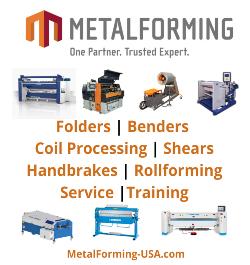
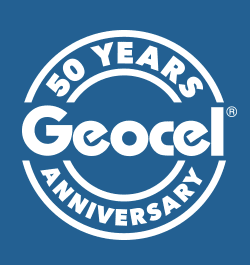
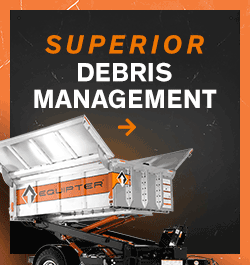





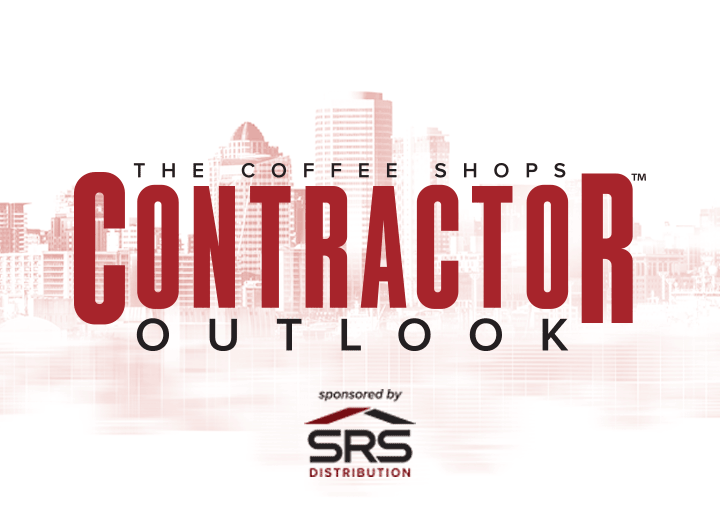


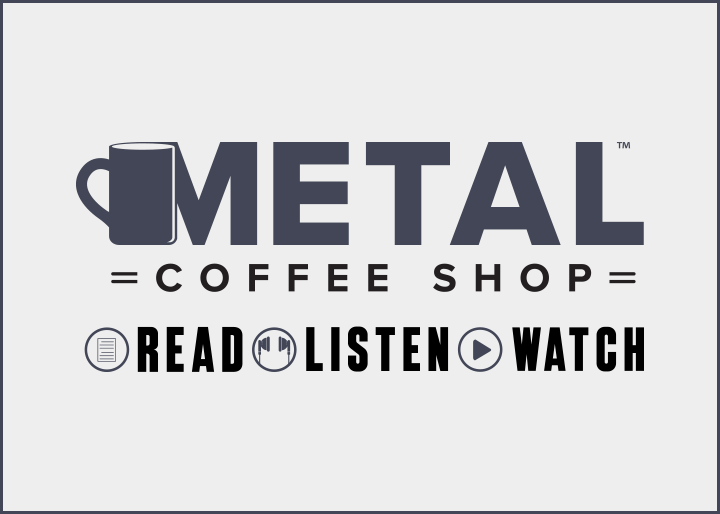

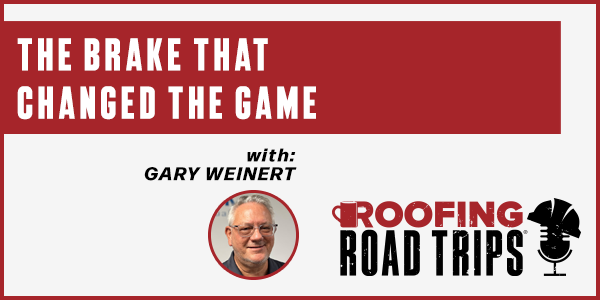
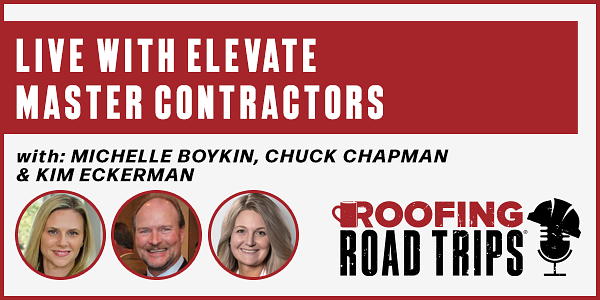
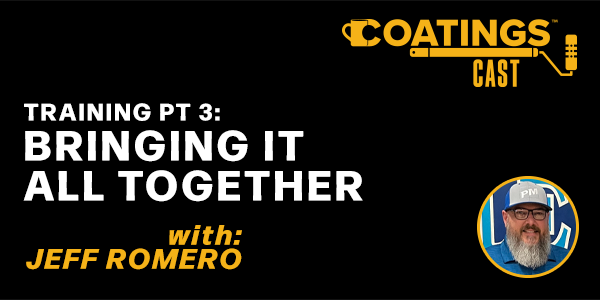
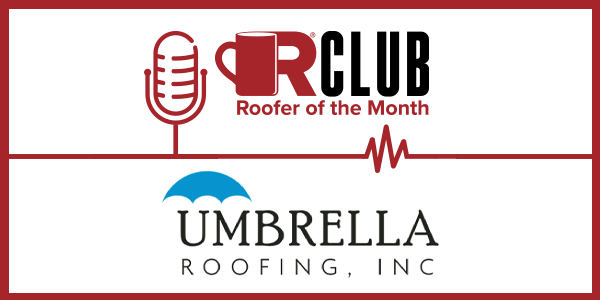

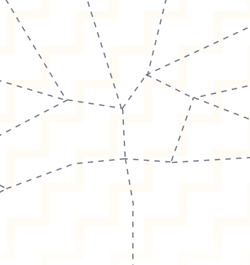
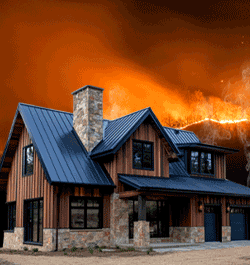
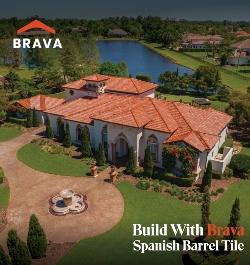

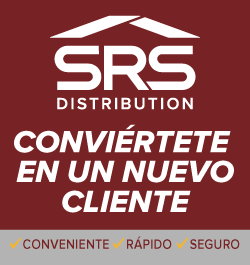
Comments
Leave a Reply
Have an account? Login to leave a comment!
Sign In